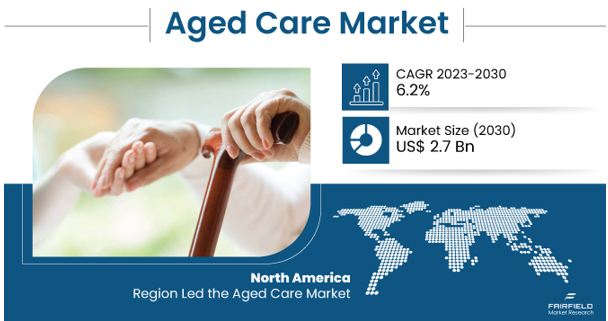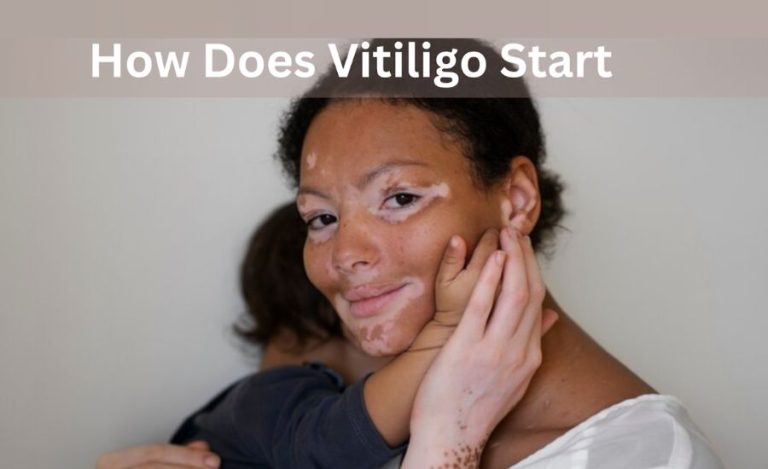Aged Care Market: Projected Growth and Key Trends
According to Fairfield Market Research, the Aged Care Market, currently valued at approximately US$1.8 billion in 2023, is projected to achieve substantial growth, reaching an estimated US$2.7 billion by 2030. This expansion represents a compound annual growth rate (CAGR) of 6.2% from 2023 to 2030. Key drivers of this growth include an increasing geriatric population, advancements in healthcare technology, and a shift towards preventive healthcare.
Explore the Market Overview:
https://www.fairfieldmarketresearch.com/report/aged-care-market
Technological Integration and Its Impact
The incorporation of cutting-edge technologies, such as wearable health technology and artificial intelligence (AI), is a prevalent trend in the geriatric care industry. These innovations are revolutionizing the sector by enabling personalized care plans, real-time health monitoring, and predictive analytics. The adoption of these technologies ensures a higher quality of care, tailored to the unique needs of the elderly.
Telehealth Solutions on the Rise
The rapid growth of telehealth solutions for remote healthcare delivery is another significant trend. Telemedicine, remote monitoring, and virtual consultations are becoming essential elements in improving the convenience and accessibility of medical services for the elderly, especially in geographically isolated areas. These solutions enhance the overall healthcare experience for the elderly, ensuring timely and effective medical interventions.
Shift Towards Preventive Healthcare
A notable development in the aged care market is the shift towards preventive healthcare approaches. There is a growing trend towards proactive health management, with personalized preventive care strategies being adopted to improve the general well-being of the elderly. This approach not only enhances the quality of life for the elderly but also reduces the overall healthcare costs by preventing severe health issues before they arise.
Increase in Utilization of Assistive Devices
The utilization of sophisticated assistive devices within the geriatric care industry is on the rise. These devices, ranging from wearable health technologies to smart home solutions, empower the elderly by promoting safety and independence. They address the changing requirements of an aging population, enhancing their ability to live comfortably and securely in their own homes.
Pharmaceutical Sector Holds Significant Market Share
In 2022, the pharmaceutical sector held the largest market share within the aged care industry. The high incidence of chronic diseases among the geriatric population drives the demand for pharmaceutical interventions, medications, and healthcare supplements. This demographic continues to be a major pillar in the aged care market, with ongoing research and development in geriatric-specific medications further propelling growth.
Homecare Segment Leading the Market
Among the adult daycare, homecare, and institutional care segments, homecare is anticipated to lead in 2022. The increasing preference for aging in place, coupled with technological advancements in home-based healthcare, significantly contributes to the expansion of the homecare market. This trend reflects the growing desire among the elderly to receive care in the comfort of their own homes.
Diabetes Care at the Forefront
Diabetes is expected to hold the largest market share among health segments in 2022. The global diabetes pandemic emphasizes the need for tailored care and management strategies for the aging population. This trend drives diabetes care to the forefront of the market, with innovative solutions aimed at managing and preventing diabetes-related complications among the elderly.
Regional Market Dynamics
North America Leading in Market Penetration
North America is positioned to achieve the highest level of market penetration on a global scale. The region is a hub for geriatric care services, driven by advanced technological adoption and a well-established healthcare infrastructure. Comprehensive healthcare services, AI-driven analytics, and innovative telehealth solutions contribute to North America’s leadership in the aged care market.
Asia Pacific Anticipated for Rapid Growth
The Asia Pacific region is expected to experience the most rapid expansion in market penetration. Factors such as a swiftly aging population, increased healthcare awareness, and government initiatives drive growth in this region. The advancement of infrastructure, technological progress, and the creation of novel care models are pivotal in bolstering healthcare services for the elderly in the Asia Pacific.
Key Growth Determinants
Significant Aging Population
The aging global population is a significant market catalyst, driving the demand for comprehensive healthcare solutions tailored to the needs of the elderly. This demographic shift underscores the need for innovative pharmaceuticals, assistive technologies, and healthcare provisions, stimulating market growth.
Swift Progressions in Healthcare Technology
Advancements in healthcare technology are transforming the domain of elderly care. The integration of intelligent assistive devices, telehealth services, and AI enables more individualized, efficient, and accessible healthcare services for the elderly.
Enhanced Accessibility and Healthcare Awareness
Increased healthcare awareness and improved accessibility to healthcare services contribute to market growth. As individuals recognize the importance of proactive health management, they are more likely to adopt preventive healthcare measures, driving demand for elderly care solutions.
Major Growth Barriers
Financial Constraints
Financial limitations pose significant challenges to the aged care industry. The increasing expenses associated with advanced healthcare technologies, pharmaceuticals, and personalized care solutions strain healthcare systems worldwide.
Shortage of Skilled Caregivers
A shortage of skilled healthcare practitioners and geriatric care-specialized caregivers is a major impediment to the market. The demand for elderly care surpasses the supply of qualified personnel, hindering the delivery of high-quality care.
Key Trends and Opportunities
Expansion of Telehealth Applications
The exponential growth of telehealth applications presents significant opportunities. Companies can capitalize on this trend by forming strategic alliances, investing in user-friendly platforms, and enhancing remote monitoring capabilities.
Growing Focus on Wearable Technology
The increasing prevalence of wearable health technologies offers substantial growth opportunities. Companies can leverage this trend by emphasizing health-centric features, integrating data with healthcare providers, and developing seamless user experiences.
Demand for Personalized Healthcare
The rising demand for personalized healthcare solutions presents a significant opportunity. Companies can invest in AI-powered analytics, genomic medicine, and customized care plans to address the varied care requirements of the elderly.
Competitive Landscape
The competitive landscape of the global aged care market is characterized by strategic alliances, personalized healthcare solutions, and technological innovation. Companies that provide comprehensive, cutting-edge, and economically viable services are expected to gain a competitive advantage.
Leading Companies in the Aged Care Market
- Koninklijke Philips N.V.
- Amedisys
- ECON Healthcare Group
- Encompass Health Corporation
- EXTENDICARE
- LHC Group, Inc.
- Medtronic
- ORPEA GROUPE
- Prolific
- ElderCareCanada
Global Aged Care Market Segmentation
By Product Type:
- Pharmaceuticals
- Housing
- Assistive Devices
By Service:
- Institutional Care
- Homecare
- Adult Day Care
By Application:
- Heart Diseases
- Cancer
- Kidney Diseases
- Diabetes
- Osteoporosis
- Neurological
- Respiratory
- Others
By Geographic Coverage:
- North America (U.S., Canada)
- Europe (Germany, U.K., France, Italy, Turkey, Russia, Rest of Europe)
- Asia Pacific (China, Japan, South Korea, India, Southeast Asia, Rest of Asia Pacific)
- Latin America (Brazil, Mexico, Argentina, Rest of Latin America)
- Middle East & Africa (GCC, South Africa, Egypt, Nigeria, Rest of Middle East & Africa)







